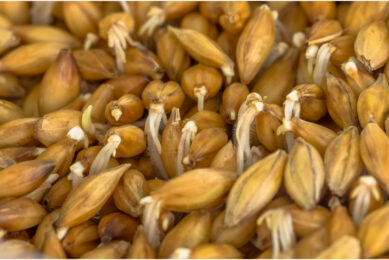Research: Temperature and particle size in extruding barley and sorghum
Australian researchers in Queensland studied the effect of extrusion temperature and pre-extrusion particle size on starch digestion kinetics in barley and sorghum grain extrudates.
Barley and sorghum milled grains were separated into three size fractions (fine, <0.5 mm; medium, 0.5–1.0 mm; coarse, >1.0 mm) and extruded at two temperature levels (maximum of 100 °C or 140 °C), to determine the effect of pre-extrusion fraction size on starch digestibility.
Results
Following extrusion, in vitro enzymatic starch digestibility was markedly enhanced with a first order rate, typically ten times greater than before extrusion, but following the same trend i.e. faster digestion for finer pre-extrusion grain sizes.
For sorghum, the projected maximum digestibility was also reduced with pre-extrusion grain size. There were only minor differences in digestibility following extrusion at 100 °C compared with 140 °C.
Grains were not pre-conditioned, so moisture uptake during extrusion may have been limited, resulting in extrudates containing residual ungelatinized starch granules.
Conclusion
It is proposed that the main effect of extrusion processing was to open up the grain endosperm structure, thereby reducing the diffusion path lengths for amylase to digest starch.
The results indicate that an efficient use of extrusion processing could be to target separated larger particles from milled grains for re-combination with finer ground grains for improved energy utilization in monogastric feeds.











